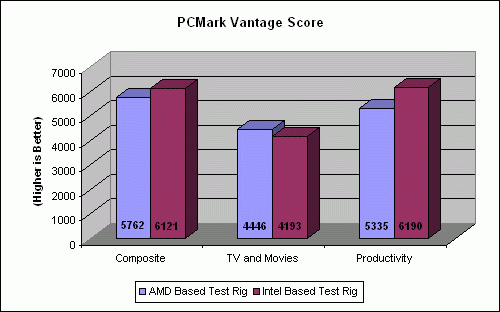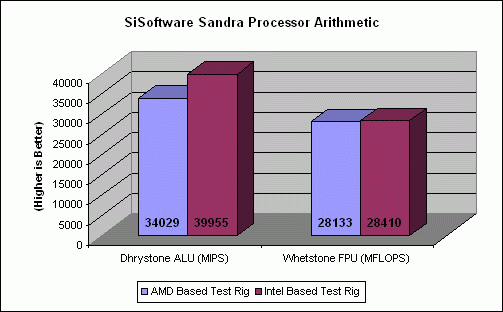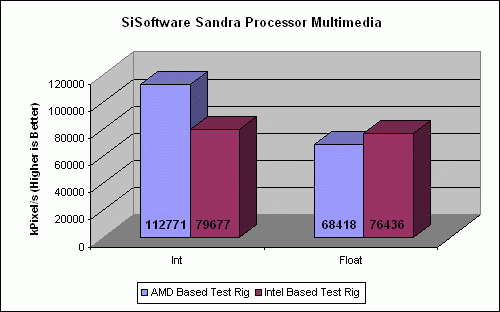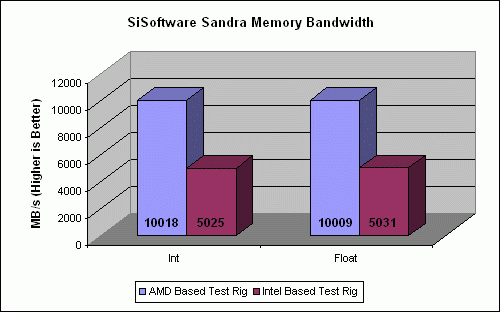Synthetic Benchmarks
We start our benchmark run with the synthetic benchmarks, and our first test is Futuremark’s PCMark Vantage. This advanced suite is an update to PCMark05, and adds optimizations and performance tests that are more suited to modern computers running Windows Vista.

When placed up against the results we get from our standard test rig, the rig running the Gigabyte board was 14% faster on it’s composite score, and 6% faster in productivity. Though the Q6600 is 100MHz faster then the Phenom 9850, the contribution of that difference to these results is going to be negligible. That’s further shown by the TV and Movies score, which favours the AMD hardware. What we’re seeing here is where each system shines. The Intel hardware is faster overall, and seems to be quick in desktop apps, but the AMD setup is faster in multimedia and rendering.

The assertion made from the PCMark Vantage tests carries over into out SiSoftware Sandra run-throughs. In the processor Arithmetic tests, the Intel hardware was faster by a decent margin overall. Dhrystone tests showed the biggest gains, while Whetstone tests were neck and neck between the two architectures.

Things become a little more muddled in the Processor Multimedia tests. SiSoft Sandra reported a clear win for AMD on the Int tests, and and a clear win for the Intel rig on the Float tests.

Finally we test raw memory bandwidth, and the AMD rig thoroughly beats the Intel hardware in this test. This can most likely be attributed to AMD processors having their memory controllers on die with the CPU. In the long run, these tests are still synthetic. We need to get to some real world testing to see how well the Intel rig really does.

